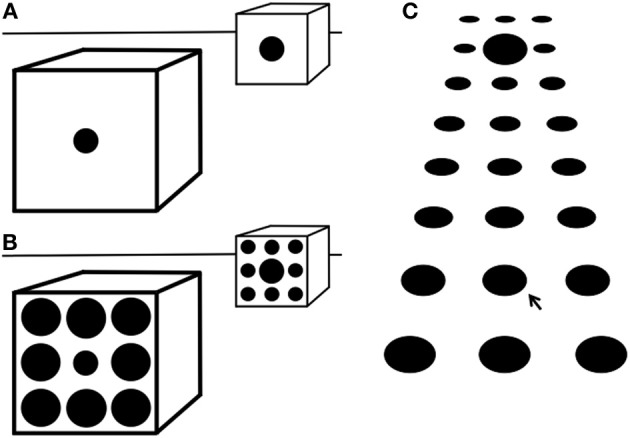Figure 2.

(A) Most people see the further circle as being larger than the nearer one, though they are equal. They would also judge the ‘real’ size of the further circle within the pictured space to be much larger than the nearer circle. This shows that pictorial cues to depth and size influence perception of the markings on the picture surface. (B) Adding surrounds, as in the Ebbinghaus illusion, increases the perceived size difference between the two circles. This suggests that surround size adds to the other pictorial depth cues. (C) In texture gradients the mean size and separation of elements decreases with depth. The size of the elements on the picture surface is seen as decreasing with depth, but their ‘real’ size within the pictured space would be judged to be approximately constant. The large element in the center of the second row from the top may be seen as being larger than that arrowed below, but they are equal. Its ‘real’ size within the pictured space would be judged to be much larger. The bottom and top three rows are versions of the Ebbinghaus illusion. Therefore, this suggests that the illusion may in part be due to the visual system learning to use such pictorial cues. Figure reprinted, with permission by John Wiley and Sons, from Doherty et al. (2010).
